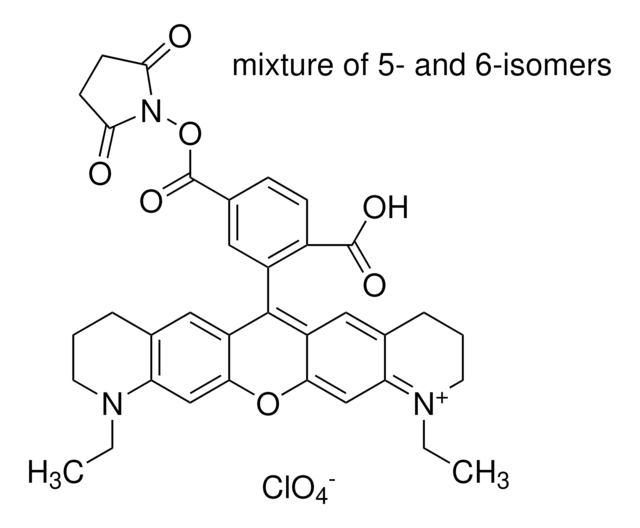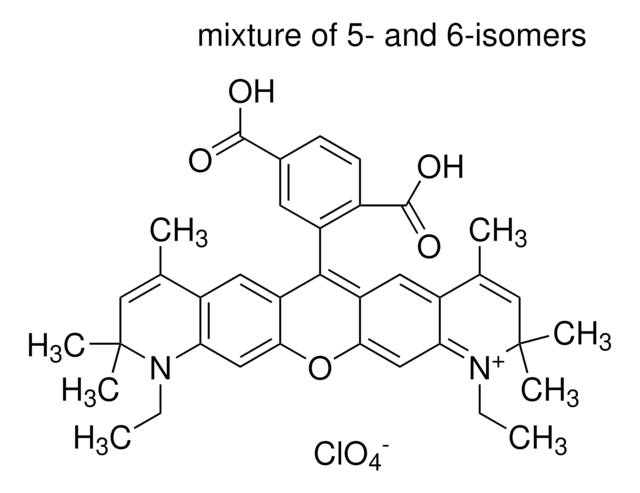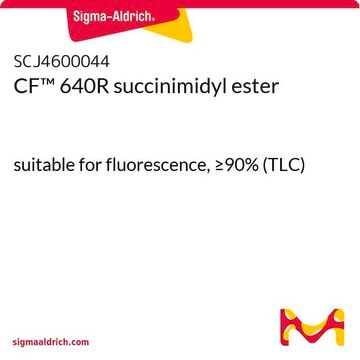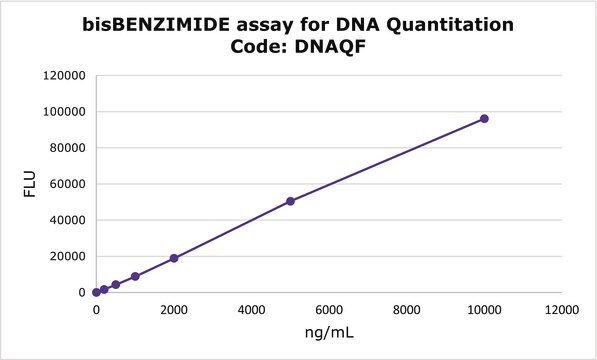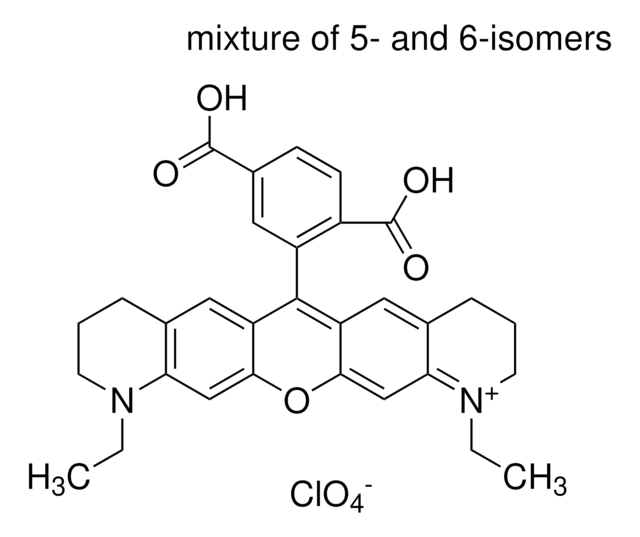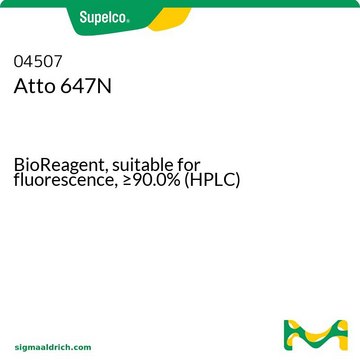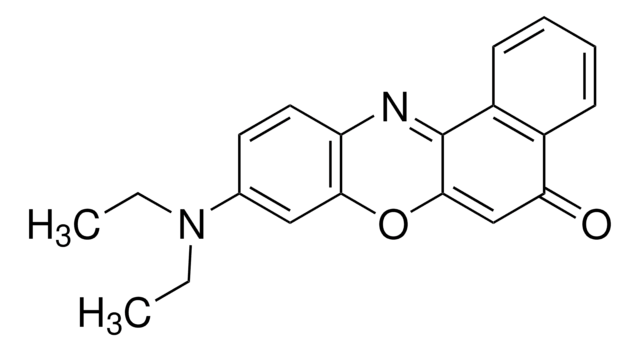06699
Atto 532
BioReagent, suitable for fluorescence, ≥90% (HPCE)
Sign Into View Organizational & Contract Pricing
All Photos(1)
About This Item
Recommended Products
product line
BioReagent
Quality Level
Assay
≥90% (HPCE)
manufacturer/tradename
ATTO-TEC GmbH
fluorescence
λex 533 nm; λem 560 nm in 0.1 M phosphate pH 7.0
suitability
suitable for fluorescence
storage temp.
−20°C
General description
Atto 532 is a new label with high molecular absorption (115,000) and quantum yield (0.90) as well as sufficient Stoke′s shift between excitation and emission maximum. It is optimized for excitation with frequency doubled Nd:YAG-Laser, and is characterized by high photostability.
Application
Atto fluorescent labels are designed for high sensitivity applications, including single molecule detection. Atto labels have rigid structures that do not show any cis-trans-isomerization. Thus these labels display exceptional intensity with minimal spectral shift on conjugation.
Atto 532 has been conjugated with the secondary antibodies for STED (stimulated emission depletion) microscopy and immunofluorescence studies.
Atto 532 has been conjugated with the secondary antibodies for STED (stimulated emission depletion) microscopy and immunofluorescence studies.
Legal Information
This product is for Research use only. In case of intended commercialization, please contact the IP-holder (ATTO-TEC GmbH, Germany) for licensing.
Storage Class Code
11 - Combustible Solids
WGK
WGK 3
Flash Point(F)
Not applicable
Flash Point(C)
Not applicable
Personal Protective Equipment
dust mask type N95 (US), Eyeshields, Gloves
Choose from one of the most recent versions:
Already Own This Product?
Find documentation for the products that you have recently purchased in the Document Library.
Customers Also Viewed
Uffe V Schneider et al.
BMC biotechnology, 10, 4-4 (2010-01-28)
Melting temperature of DNA structures can be determined on the LightCycler using quenching of FAM. This method is very suitable for pH independent melting point (Tm) determination performed at basic or neutral pH, as a high throughput alternative to UV
3D reconstruction of high-resolution STED microscope images.
Punge A et al.
Microscopy Research and Technique, 71, 644-644 (2008)
Evidence for major structural changes in subunit C of the vacuolar ATPase due to nucleotide binding.
Andrea Armbrüster et al.
FEBS letters, 579(9), 1961-1967 (2005-03-29)
The ability of subunit C of eukaryotic V-ATPases to bind ADP and ATP is demonstrated by photoaffinity labeling and fluorescence correlation spectroscopy (FCS). Quantitation of the photoaffinity and the FCS data indicate that the ATP-analogues bind more weakly to subunit
Daniel Aquino et al.
Nature methods, 8(4), 353-359 (2011-03-15)
We demonstrate three-dimensional (3D) super-resolution imaging of stochastically switched fluorophores distributed across whole cells. By evaluating the higher moments of the diffraction spot provided by a 4Pi detection scheme, single markers can be simultaneously localized with <10 nm precision in
SERRS-based detection of dye-labeled DNA using positively-charged Ag nanoparticles.
Gill, R. and Lucassen, G. W.
Analytical Methods : Advancing Methods and Applications, 2, 445-447 (2010)
Our team of scientists has experience in all areas of research including Life Science, Material Science, Chemical Synthesis, Chromatography, Analytical and many others.
Contact Technical Service
